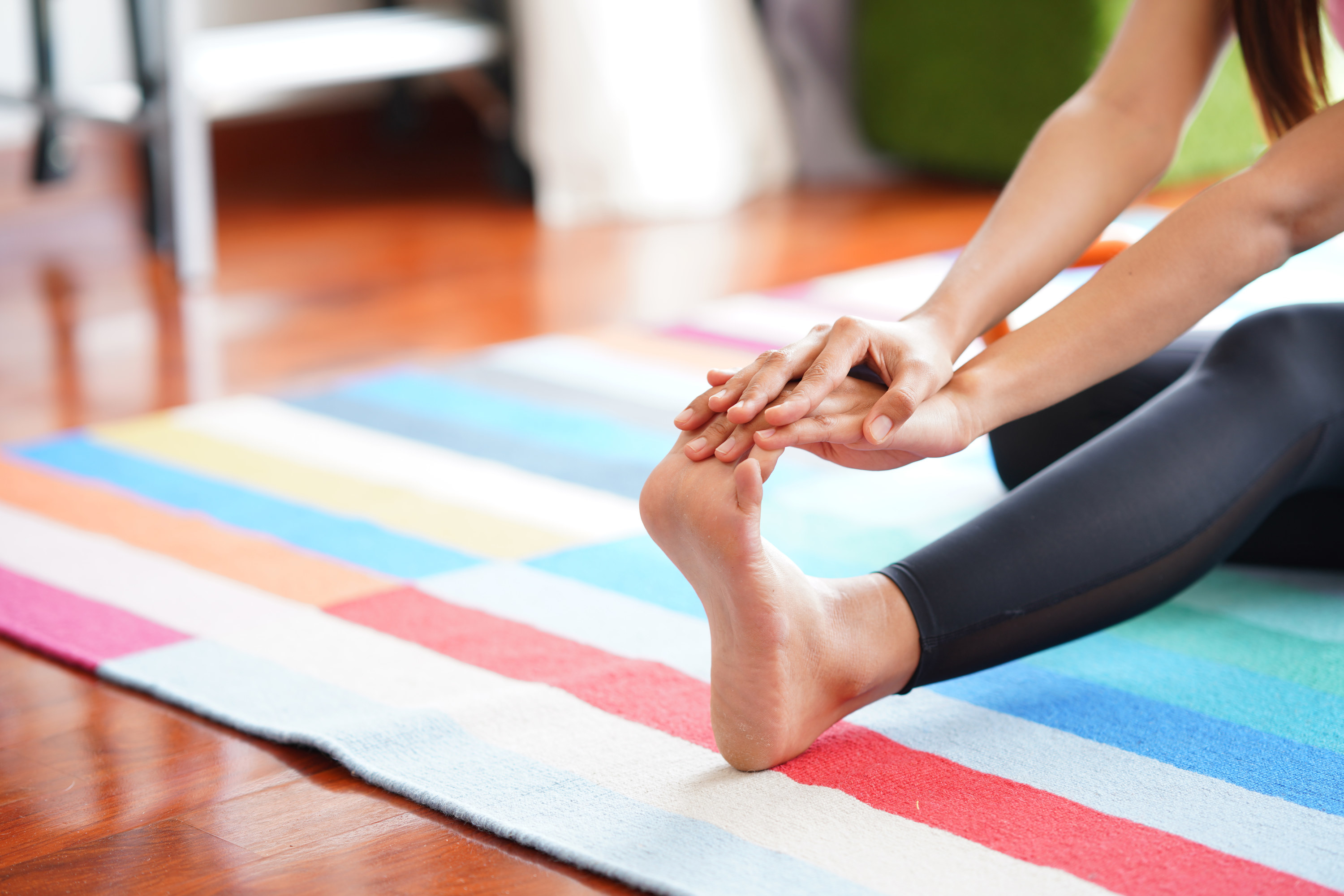How to Reduce Spasticity: The Best Exercises for Relief
Spasticity is caused by damage to the brain or spinal cord. It is the stiffness or rigidness of muscles that impacts our daily activities. The muscles are stiff which makes it challenging to work or move. Individuals with multiple sclerosis or cerebral palsy often face spasticity that disturbs their ability to perform various tasks. So it is essential to reduce spasticity and improve mobility. It will help treat the one affected by this condition.
Exercise to manage spasticity is an important part that enhances the overall well-being. It helps in improving daily functioning and enhances flexibility by alleviating pain. Spasticity relief prevents the complications that come with muscle stiffness. Also when you engage in physical therapy for spasticity and include exercises to manage spasticity leads to movement in muscle and secondary issues like joint contractures.
The blog will cover in-depth information on the best exercises for spasticity. It covers muscle spasticity exercises like stretching for spasticity or physical therapy for Spasticity. We will explore various spasticity relief exercises through this blog. It will also help you create a tailored program for Exercise to Manage Spasticity.
Benefits of Exercise for Spasticity

Exercise helps people with spasticity in many ways. Among the most important benefits is that it softens the muscles making them more flexible. Doing exercises especially those directed at the stretching and movement of joints helps to elongate your muscles and increase the flexibility of your joints. In return it reduces the tightness and stiffness brought on by spasticity making it easier for one to move around—and hence do everyday chores.
Besides the fact that it improves coordination exercise contributes to the natural toughness of your muscles. You are zeroing in on specific muscles making them stronger through given strength exercises something that reduces the uncontrollable movement of muscles resulting from spasticity. A stronger muscle means better balance posture and stability which will prevent falls and injuries. Such exercises when performed regularly allow one to move freely and feel confident.
Exercise is also good for your mental health: Physical activity causes the body to release endorphins which give one a feeling of happiness and make them feel more relaxed. Now this is crucial in the situation of a person suffering from spasticity since; with exercise they think enlivened and better each time they exercise. Regular exercise instills a sense of pride and accomplishment in a person and a better understanding of control over their spasticity—and therefore a better quality of life.
Types of Exercises for Spasticity Relief
There are several exercises to manage spasticity and find spasticity relief. It is a powerful tool to reduce spasticity and improve movement. Listed below are the best exercises for spasticity:
1. Stretching Exercises:
Stretching for spasticity is recommended to keep the muscles flexible and reduce stiffness. When you start regular stretching it will make the muscles flexible and make movement easier and more comfortable.
- Hamstring stretch: Stretch those hamstrings by sitting on the floor and reaching for your toes holding them for 20-30 seconds.
- Calf Stretch: You should stand looking at a wall and set your one foot behind the other. Push the back heel down by keeping the back leg straight. Hold for 20-30 seconds.
- QuadricepLeg Lifts: Lying on your back one leg is bent while the other remains straights Stretch: Stand on one leg then bend the other knee by pulling that same foot back toward your buttocks. Hold onto the posture for 20-30 seconds.
2. Range of Motion Exercises
These exercises help maintain and improve joint flexibility and decrease stiffness.
- Shoulder Rolls: Sit or stand extending your arms by your sides. Roll your shoulders towards your front and then back—gentle circles with them. Do this 15 times in each direction.
- Ankle Circles: Perform the exercise while sitting in a chair and circle the ankle. Make sure that ten circles are made both clockwise and counterclockwise.
- Wrist Extensors and Flexors: Extend one arm in front of you with the palm downward. Use your other hand to press your fingers down and hold for 20-30 seconds and then pull the fingers back and hold.
3. Strengthening Exercises
Muscle strengthening can aid in the reduction of spasticity and in improving general muscle control.
- Leg Lifts: Lying on your back one leg is bent while the other remains straight. Raise the straight leg to 6 inches above the floor holding it there. Do this exercise 10 times for each leg.
- Seated Marches: Sit in your chair with both feet flat on the ground. Alternating legs lift one at a time with your knee pointed toward the ceiling and lower it back to the ground. Perform ten repetitions on each leg.
- Resistance Band Exercises: Perform resistance band exercises involving moves like bicep curls and leg presses to work on various muscles.
4. Aerobic Exercises
In essence aerobic exercises enhance health and increase spasticity management by increasing blood supply and reducing muscle stiffness.
- Walking: Easy and effective for elevating the heart rate and adding muscle flexibility.
- Swimming: Works the entire body without putting stress on weight-bearing joints.
- Bike: Whether on a stationary or road bike cycling helps improve leg strength and coordination.
5. Balance and Coordination Exercises
Balance and coordination help reduce the risk of falls and improve mobility.
- Stand on one leg: with the chair for support stand on one leg and attempt to balance for 10 to 15 seconds. Now shift your legs and repeat.
- Heel-to-Toe Walk: Walk forward by placing the heel of one foot directly in front of the toes of the other foot. Having walked ten steps in this manner I turned around and walked back.
- Arm-leg Cross: Stand with feet apart at shoulder width. Lift your right arm and left leg simultaneously and switch to left arm and right leg. Repeat ten times on each side.
Including these best exercises for spasticity will help you achieve spasticity relief. Just remember to start slowly and listen to your body. If required you can contact a healthcare professional or can also go for physical therapy for spasticity. The muscle spasticity exercises will improve the quality of life and enhance the movement of your body.
Tips for Safe and Effective Exercise

Engaging in the best spasticity exercises can help make your muscles less stiff and more robust and here's how to do it safely:
- Warm-up and Cool-down: Always include a warm-up before exercise. This will make your muscles ready for the activity and prevent injuries. You could do simple things like walking or gentle arm swings for a duration of 5 to 10 minutes. End your exercise session with cool-down stretching and relaxation of the muscles.
- Listen to your body: Listen to the body; any pain or too much discomfort means stopping and taking a rest. The purpose is not to make it even worse but to reduce spasticity.
- Apply Appropriate Techniques: Make sure that you do all your exercises correctly. If unsure of how to do an exercise ask for advice from someone knowledgeable in physical therapy for spasticity. They can demonstrate the right way and give you some pointers.
- Add Some Stretch: Stretching is essential for spasticity. Include light stretches before and after your exercises to make your muscles flexible and less tight. A good stretch mainly helps to reduce spasticity although it also prepares one for other exercises.
- Be Consistent Yet Flexible: You should try to do your spasticity management exercises regularly —even daily or weekly. However remember that you don't have to be rigid about the plan you have to prevent fatigue. Just go easy some days when you feel stronger.
- Keep Hydrated: Take enough water before during and after the exercise. This serves to ensure the proper functioning of muscles and also avoids cramping.
- Use the Right Equipment: With the right equipment you can exercise better and more safely. Wear comfortable clothes and shoes. Use tools your therapist may suggest such as resistance bands or stability balls.
- Meet Professionals: It is highly beneficial to work with professionals especially those who have experience with physical therapy for spasticity. They can work out a safe and effective exercise plan specifically for you.
- Gradual Progress: Begin with exercises that are easy for you and slowly increase the difficulty as you grow stronger. This way you can build strength without jeopardizing your safety by pushing past your limits.
- Build a Support System: Exercising with a friend or a group may work as a reminder to each other. It feels good to share your experiences and your journey with others who know what you are talking about.
With the above tips you can safely do the best exercises for spasticity and get relief from spasticity. Adding these muscle spasticity exercises and spasticity stretching into your daily routine will help to develop your movement and make you feel better. Remember that staying safe and consistent is critical to reducing spasticity.
Fit for You: Personalized Exercise Strategies
Making an exercise regimen that fits and motivates you is essential for you to stay fit by reaching your fitness goal. Here's how you can create a personalized exercise plan that helps to reduce Spasticity:
- Identifying Individual Needs and Limitations: You only need to understand your body and what it requires first.
- Know Your Fitness Level: Consider your fitness level at the moment. Are you an amateur or have you been in practice for a while? This helps answer the question of where you should start.
- Realize Limitations: Take note of any physical problem or health issue in the body of the exerciser for instance joint pains or spasticity to avoid exercises that will worsen them.
- Find What You Like: Choose exercises you enjoy. If you like what you're doing you will likely keep doing it. Do you like walking swimming or maybe yoga?
- Making Realistic and Achievable Goals: Goals will keep you focused and motivated but these goals should be attainable.
- Start Small: Have small goals. For instance exercise 10 min a day and gradually increase the time as you build up strength.
- Be Specific: Set concrete measurable goals such as "I want to walk for 30 minutes three times a week" instead of vague goals like "I want to exercise more."
- Record everything you do. In this way it is easier to observe one's progress over time.
- Adapt if necessary: If something isn't working change it. There is no harm in changing your plan.
- Seeking Advice from Health Professionals: Always ask health professionals for support to make your exercise plan safe and effective.
- Personalized Plan: A physical therapist or fitness professional can help create a plan specifically for you considering your needs and goals.
- Regular Check-Ups – Make sure to check in with your provider periodically for adjustments and to see whether your health is getting better or is at risk.
While your needs are known to goals can be set and advice can be taken from professionals to make a customized exercise plan that is ideal for you. Remember the best exercise plan is one you enjoy and can stick with!
Conclusion
To achieve spasticity relief exercise plays a vital role that further improves overall well-being. When you engage in the best exercises for spasticity it will help you to reduce spasticity significantly. Exercising regularly helps in improving flexibility and strength by supporting better coordination and balance. It makes daily movement more accessible and more comfortable. From exercise to manage spasticity to muscle spasticity exercises you can opt for the one that you like. Moreover physical therapy for spasticity helps you to have a tailored exercise workout to address specific needs and limitations.
We encourage you to start stretching for spasticity and start with fulfilling the small and manageable goals. You can gradually increase the intensity of these exercises. Making these exercises a regular part of your life will change and make improvements in your well-being. From simple stretches to aerobic exercises or strength training do not forget to take guidance from a healthcare professional.
The impact of regular exercise to manage spasticity is positive and cannot be overlooked. It will lead to reduced muscle stiffness better movement and enhanced well being. When you dedicate your time to muscle spasticity exercises you take a proactive approach towards better health. Reduce Spasticity and enjoy the benefits that come with a customized planned exercise routine.
